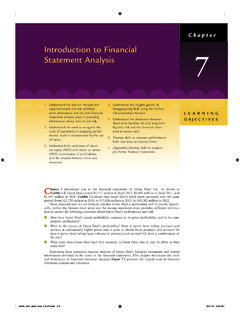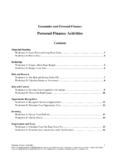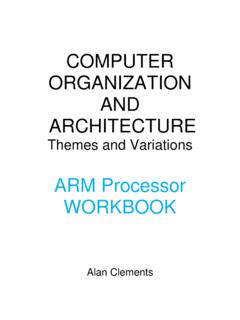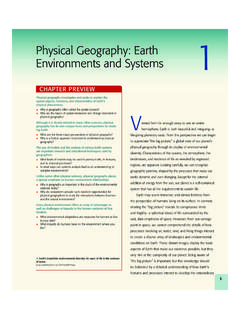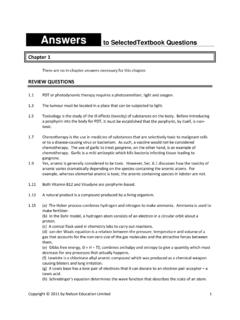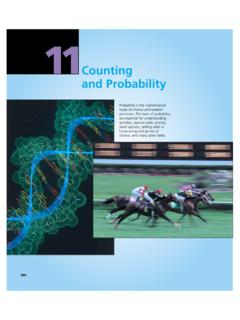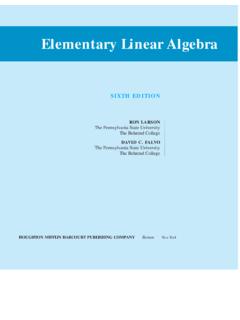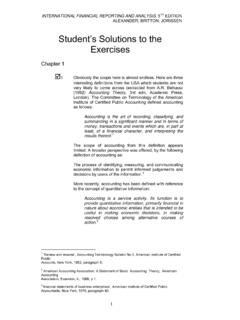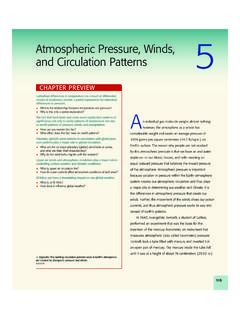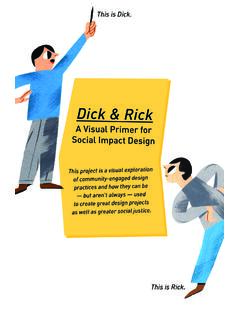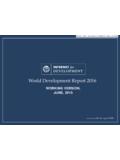Transcription of LABOR UNIONS AND COLLECTIVE BARGAINING - Cengage
1 LABOR UNIONS AND COLLECTIVE BARGAININGLEARNINGOBJECTIVESA fter studying this appendix, you will be able Describe how UNIONS in the United States are organizedLO2 Discuss the key provisions of the laws that govern LABOR management relationsLO3 Explain how LABOR contracts are negotiated and adminis-teredLO4 Evaluate the impact UNIONS have had on their members welfare and the economy, and explain the challenges that today s UNIONS faceVisit CourseMate at 1 APPENDIX Cengage Learning. All right reserved. No distribution allowed without express 1 LABOR UNIONS and COLLECTIVE BARGAINING A1 3 BILL PUGLIANO/GETTY IMAGESLO1 The Basic Structure of UnionsUnions can be organized in two basic ways. Craft UNIONS represent workers who have the same skill or work in the same profession.
2 The United Brotherhood of Carpenters and Joiners of America and the National Football League Players Association are both craft UNIONS . Industrial UNIONS represent work-ers who are employed in the same industry regardless of their spe-cific skills or profession. Although industrial UNIONS may have some highly skilled workers among their members, many of the workers they represent are semiskilled or unskilled workers. The Transport Workers union and the United Steelworkers of America are both examples of industrial basic building blocks of a national (or international) union are its local UNIONS (often just called locals ). Most unionized workers interact with their union through their local. It provides them with the opportunity to participate directly in union affairs by attending meetings and voting on union -related issues.
3 The initial stages of a grievance procedure (which we ll describe later in this appendix) are carried out at the local level, and it s usually the locals that organize workers to carry out strike activities when LABOR disputes UNIONS provide services to their locals, such as legal advice and leadership training. They also take an active role in organizing new locals and in helping existing locals increase mem-bership. Finally, the national union helps locals when they negotiate with employers. In many industrial UNIONS , the national union negotiates a master contract, after which each local union negotiates a local contract to deal with issues and problems unique to its own national UNIONS belong to the American Federation of LABOR and Congress of Industrial Organizations, better known as the AFL-CIO.
4 This federation provides a high-profile national voice for the LABOR movement. It represents American union workers at international LABOR conferences, lobbies Congress in support of pro- LABOR legislation, encourages political activism among union members, and provides resourc-es and strategic support for efforts to increase union membership. In 2005, some of the AFL-CIO s largest national UNIONS , including the Teamsters and the United Farm Workers, withdrew from the federation and formed a new coali-tion, called Change to Win. The leaders of the UNIONS that formed Change to Win said they did so because they were frustrated by the AFL-CIO s inability to stem the decline in union membership a topic we will discuss later in this appendix. With only four major Where trade UNIONS are most firmly organized, there are the rights of people most Gompers, first president of the American Federation of Laborlabor union A group of workers who have organized to work together to achieve common job-related goals, such as higher wages, better work-ing conditions, and greater job union A union comprised of work-ers who share the same skill or work in the same union A union comprised of workers employed in the same industry.
5 C SQUARED STUDIOS/PHOTODISC/GETTY IMAGESA LABOR union is a group of workers who have organized in order to pursue common work-related goals, such as better wages and benefits, safer working conditions, and greater job security. Few topics in the world of business generate more controversy than LABOR UNIONS they have many passionate supporters, but they also have equally fierce detractors. To their supporters, UNIONS protect workers from exploitation by powerful employers, give them a voice in the LABOR market, and help them achieve a better standard of living. But critics say that UNIONS have undermined the competitiveness of American firms in the intense-ly competitive global marketplace, and that they are out of touch with economic reality and the needs of today s is the case with many controversial topics, evidence can be found to support the positions of both critics and defenders.
6 The purpose of this appendix is to help you understand the role UNIONS play in today s economy and the challenges and opportunities UNIONS face as the economy enters the second decade of the 21st century. Cengage Learning. All right reserved. No distribution allowed without express 4 Appendix 1 LABOR UNIONS and COLLECTIVE Bargainingunions, Change to Win remains a much smaller organization than the AFL-CIO, but its leaders have been very active in promoting the growth of LABOR Laws in the United StatesExhibit lists the major feder-al laws dealing with LABOR UNIONS and provides a brief description of their key provisions. Notice that the first of these laws was not enacted until 1932. For a cen-tury and a half after our nation s founding, there were no federal laws that dealt specifically with the rights of workers to organize UNIONS or with the ways UNIONS could carry out their functions.
7 This lack of legal recognition (and protection) helps explain why the LABOR movement struggled in our nation s early to the 1930s, the prevailing legal view concerning employment relationships was based on a strict application of the concept of employment at will, which defined employment as a completely voluntary relationship that both the employee and the employer were free to terminate at any time and for any reason. Many employers took advantage of this doctrine to fire any workers they even suspected of being union supporters. Another problem that early UNIONS faced was that because of their lack of legal recognition courts almost always sided with employers in LABOR disputes. For instance, employers usually found it easy to obtain injunc-tions (court orders) preventing workers from picketing their place of employment when dis-putes Great Depression of the 1930s proved a turning point in LABOR history.
8 As company after company announced massive layoffs, the public began to view UNIONS as necessary protectors of workers. This change in public attitudes brought about political changes as well. Notice that the first three laws listed in Exhibit were passed during the Depression years. It shouldn t be surprising that the provisions of all three were largely favorable to far the most important LABOR law enacted during the 1930s was the National LABOR Relations Act of 1935 (NLRA), also known as the Wagner Act. The NLRA prevented employers from discriminating against union workers in hiring or employ-ment practices and required employers to bargain in good faith with UNIONS . It also established the National LABOR Relations Board to investigate claims of unfair LABOR practices.
9 The passage of the NLRA gave a tre-mendous boost to the LABOR movement. union member-ship increased from million workers in 1935 to million in after World War II, UNIONS began to flex their newfound strength. In the year immediately following the end of World War II, almost 5 million union workers went out on strike including 750,000 steelworkers, in what remains the largest single strike in history. This series of strikes created serious dis-ruptions to the economy and caused many people to fear that big LABOR had become too response to these concerns, Congress passed the LABOR Management Relations Act of 1947 (usually called the Taft Hartley Act). As shown in Exhibit , the Taft Hartley Act placed limits on UNIONS much as EXHIBIT Major LABOR Legislation in the United StatesDateLawMajor Provisions1932 Norris LaGuardia Act Stated that workers had a legal right to organize Made it more difficult to get injunctions against peaceful union activities 1935 National LABOR Relations Act (or Wagner Act)
10 Made it illegal for employers to discriminate based on union membership Established the National LABOR Relations Board to investigate unfair LABOR practices Established a voting procedure for workers to certify a union as their BARGAINING agent Required employers to recognize certified UNIONS and bargain with them in good faith1938 Fair LABOR Standards Act Banned many types of child LABOR Established the first federal minimum wage (25 cents per hour) Established a standard 40-hour workweek Required that hourly workers receive overtime pay when they work in excess of 40 hours per week1947 LABOR Management Relations Act Identified unfair LABOR practices by UNIONS and declared them illegal Allowed employers to speak against UNIONS during organizing campaigns Allowed union members to decertify their union , removing its right to represent them Established provisions for dealing with emergency strikes that threatened the nation s health or security1959 LABOR Management Reporting and Disclosure Act (or Landrum Griffin Act)
